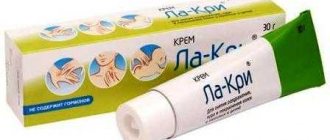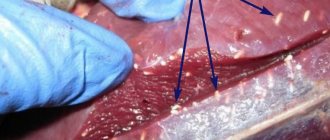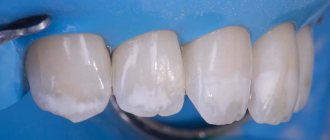June 25, 2020
We often hear the term “vitaminosis” in colloquial speech, and this term is used to explain any state of “ill health.” However, true vitamin deficiency is an extreme degree of disease caused by a lack of one or more groups of vitamins
We often hear the term “vitaminosis” in colloquial speech, and this term is used to explain any state of “ill health.” However, true vitamin deficiency is an extreme degree of disease caused by a lack of one or more groups of vitamins.
Acute vitamin deficiency seriously affects metabolic processes in the body and has a number of specific clinical manifestations. This condition requires medical correction and treatment, as it can lead to quite severe disturbances in the functioning of internal organs. True vitamin deficiency is very rare in medical practice.
Signs of vitamin deficiency in children and adults
Catalysts that cause vitamin deficiency of vitamins A, B, C and others are divided into external (food, environmental, etc.) and internal (caused by dysfunction of internal organs).
Among the nutritional prerequisites, the following reasons for the development of vitamin deficiency are distinguished:
- Unbalanced diet.
- Early or incorrect introduction of complementary foods to infants.
- Fasting, strict diets.
- Consumption of poor quality products.
- Irrational heat treatment and improper storage of food.
- The use of medications that block the normal absorption of vitamins by the body.
In addition to food reasons for the appearance of severe vitamin deficiency, there are such external prerequisites for its development as:
- Extreme living conditions (long stay in cold/hot latitudes, high in the mountains).
- Severe or prolonged stressful conditions.
- Alcohol abuse, nicotine and drug addiction.
- Living in unfavorable environmental conditions.
- Excessive physical activity.
It is also necessary to mention internal prerequisites caused by diseases and disorders of the internal organs. These include:
- Deviations in the functioning of the digestive tract.
- Insufficient level of development of the gastrointestinal tract (in children).
- Disorders of the endocrine system.
- Weak defenses of the body.
- Malfunctions in the vitamin absorption system. They manifest themselves in disruption of transport and enzymatic functions, permeability of cell walls, as well as deviations in the metabolism of vitamins.
- The presence of parasites in the body.
- Dysbacteriosis.
- Liver and kidney diseases.
Causes of the disease
The main cause of vitamin deficiency remains an unbalanced diet. Excessive consumption of sugar and simple carbohydrates impoverishes the diet and leads to the development of this condition. Dysbacteriosis and other pathologies of the gastrointestinal tract that impair the digestibility of food are also considered to be among the possible causes.
For example, the development of vitamin deficiency for this reason is quite common in children with malabsorption syndrome. Vitamin deficiency occurs in pregnant women, because their body is forced to supply nutrients to two people at once. A similar condition may develop in a person who is in a state of acute stress or physical overexertion. Factors such as infection with parasitic infections, helminthic infestations, and work in harmful conditions can deplete the body.
Vitamin deficiency: symptoms
Depending on which vitamin the body lacks, the signs of vitamin deficiency can vary greatly. Below is a list of symptoms that occur with a lack of vitamins A, B, C, D, E, PP, K.
- Vitamin deficiency on the skin manifests itself in the form of such conditions as: dryness, itching, burning, hyperpigmentation, increased skin pattern, decreased elasticity, the appearance of spider veins, rashes in the form of acne and pimples, the formation of small weeping erosions, dry scales and microcracks, the appearance stretch marks and wrinkles. In some cases, the top layer of skin may peel off.
- From the digestive system, there is a decrease in appetite, diarrhea or constipation, weight loss, and vomiting.
- On the part of the oral cavity, bleeding gums, thinning of tooth enamel, increased sensitivity of teeth to hot, cold, sweet, and sour foods, slowed tooth growth in children, and tooth loss in adults may occur.
- In hair and nails, fragility, separation, yellowing and deformation of the nail plates, and hair loss are observed.
- Muscle cramps can be diagnosed.
- From the circulatory system: the appearance of bruises, bleeding gums, hemorrhage into blood vessels.
- From the organs of vision: “night blindness”, decreased visual acuity, feeling of sand under the eyelids.
- From the musculoskeletal system: fragility of bones, pain in joints and bones, disorders of the development of the musculoskeletal system in children.
- General condition of the body: chronic fatigue syndrome, weakness, drowsiness, irritability, apathy, depression, dizziness, sleep disturbances, headaches, mood swings.
The ways in which vitamin deficiency manifests itself may vary. Therefore, to establish an accurate diagnosis, you need to consult a doctor.
Interaction of vitamin A with other drugs and vitamins
Vitamin A is recommended to be consumed together with vitamins E, B and macroelements such as phosphorus, potassium, calcium, zinc.
It should be remembered that not all vitamin complexes that you can find in pharmacies will contain the optimal ratio of micro and macroelements for your body, so you should be very careful when choosing them and it is highly advisable to consult with a specialist before using them.
Also, do not forget that when taking vitamin A, you should not drink alcohol. Combining retinol with alcoholic beverages can lead to serious liver problems and other diseases. Doctors also do not recommend using medicinal laxatives to avoid poor absorption of retinol.
Vitamin deficiency in children
Children suffer from a lack or absence of vitamins in the body more often than adults. This is due to their fragile immune system and insufficient development of the gastrointestinal tract.
The state of vitamin deficiency can lead to a number of serious diseases, such as rickets and ichthyosis. Therefore, when the first signs of vitamin deficiency appear (with vitamin deficiency in the hair, vitamin deficiency on the fingers, lips or feet), urgently take the child for a consultation with a pediatrician.
Diagnosis of hypovitaminosis
Symptoms of vitamin deficiency require immediate contact with a gastroenterologist. The doctor performs a physical examination of the patient and collects information for the medical history. The manifestations of the pathology are specific, so making a diagnosis in most cases does not cause difficulties.
Analysis of patient biomaterials in laboratory conditions allows us to assess the degree of vitamin deficiency and identify pathologies that could cause it.
Additional consultations with doctors are prescribed to the patient if he has chronic pathologies or is undergoing treatment with drugs that cause vitamin deficiency. The gastroenterologist takes into account the prescriptions of his colleagues when developing a therapeutic course for a child or adult.
Vitamin deficiency in women during pregnancy
During pregnancy, the mother's body places additional stress. To make it easier to endure pregnancy, as well as to provide the baby with the necessary vitamins, the expectant mother should carefully monitor her diet. Only a doctor can correct it and supplement it with the necessary vitamins. Doing this on your own is prohibited, since some vitamins cannot be taken during a certain trimester of pregnancy.
Types of vitamin deficiency in the body
The most common types of the disease:
- Vitamin A deficiency. The main indicators of a lack of this vitamin are blurred vision, anemia and symptoms of vitamin deficiency on the skin (dryness and flaking). Treatment requires dietary adjustments: inclusion of fish oil, fatty sour cream, vegetable oils, carrots, sea buckthorn, and spinach in the diet.
- Vitamin D deficiency. This vitamin is generated by exposure to sunlight. Its deficiency in the body manifests itself through increased sweating, constipation, pathology of the musculoskeletal system, irritability, and problems with normal sleep. Nutrition for vitamin D deficiency should be enriched with meat, fish, fish oil, liver, and chicken eggs.
- Lack of vitamin E. Characterized by nervous disorders, fragility of blood vessels, impaired reproductive function and dry skin. The diet should include vegetable oils, nuts, seeds, meat, eggs, and milk.
- Absence or deficiency of vitamin C. Manifests itself in the form of bleeding gums, swelling of the lower extremities, anemia, white coating on the tongue, weakness, dizziness. It is necessary to eat rose hips or a decoction of them, citrus fruits, sorrel, bell pepper, and rowan.
- Lack of vitamin K. Its symptom is bleeding and hemorrhage. You should include beef liver, spinach, and Brussels sprouts in your diet.
- Vitamin deficiency of B vitamins. A deficiency of one of the vitamins of this family - B1, B6, B12, B9 - leads to headaches, memory disorders, convulsions, insomnia, stomatitis, coordination problems, depression, tachycardia, and pathology of the hematopoietic system. The emphasis in the diet should be on eggs, liver, legumes, bananas, cheese, fresh vegetables, bread.
- Vitamin P deficiency. The main symptom is hemorrhages in the skin and mucous membranes. You should add rose hips, green tea, and citrus fruits to your diet.
Why do we need vitamin A?
Vitamin A is available in two forms - carotene or provitamin A and a complete vitamin complex, which is commonly called retinol. In both variants, this biologically active substance is fat-soluble.
The main functions of vitamin A are:
- Normalization of the redox balance by eliminating oxidation processes, which leads to a slowdown in the aging of the body.
- Participation in the immune response.
- Stimulation of the work of retinal cells.
- Regulates cell growth.
Vitamin deficiency: treatment
If the deficiency is minor, your doctor may prescribe medications orally. If there is a pronounced deficiency of a particular vitamin, intramuscular injections will be required. Physiotherapeutic procedures may also be required (for vitamin D deficiency).
For vitamin deficiency, not only medication, but also folk treatment helps: a decoction of rose hips, rowan, and viburnum. In addition, you can prepare a vitamin mixture from ground nuts, dried apricots, prunes, lemon, raisins and honey.
Prevention of vitamin deficiency
To protect yourself from seasonal vitamin deficiency, a balanced diet is recommended. Avoid overly strict diets and fasting, as only a rational approach to diet planning will help protect against vitamin deficiency in the body. Eat as many fruits, berries and vegetables as possible, do not forget about vegetable oils and foods of animal origin.
In winter and spring, when vitamins are scarce, it is recommended to sprout wheat, oats, green buckwheat, and lentils at home: green sprouts help replenish the lack of vitamins and prevent vitamin deficiency.
Taking vitamins
Vitamin A is fat-soluble; this substance accumulates and is excreted from the body very slowly. Therefore, when diagnosing A-vitaminosis, it is quite difficult to quickly compensate for the lack of necessary substances through organic products.
To quickly relieve the symptoms of vitamin deficiency, doctors advise taking additional retinol.
The optimal form of vitamin A absorption is capsules. However, before using any vitamins, you should consult your doctor and follow the exact recommendations for taking vitamin complexes in order to get the most stable and quick effect from them.
As a rule, retinol tablets are used twice a day after meals.
Clinical researches
A clinical study conducted jointly with the Union of Pediatricians of Russia proves the high efficiency, safety and tolerability of products for daily skin care of children with mild and moderate forms of atopic dermatitis and during remission, accompanied by a decrease in the quality of life of patients. As a result of therapy, the following effects of the La-Cri cleansing gel were noted:
- Gentle skin cleansing;
- Relieving redness and itching;
- Skin restoration;
- Skin nutrition.
Sources:
- B.A. Shamov, I.G. Safiullina, A.B. Beshimova, T.B. Shamov, Differential diagnosis of atopic dermatitis, Journal of Practical Medicine, 2011
- Fokina R.A., Atopic dermatitis: stages of development of classification forms, Siberian Medical Journal, 2007
- A.N. Pampura, A.A. Chuslyaeva, Modern approaches to the treatment of atopic dermatitis in children
Photos of vitamin deficiency
You can see photos of vitamin deficiency on our website.
Photo album on the disease







